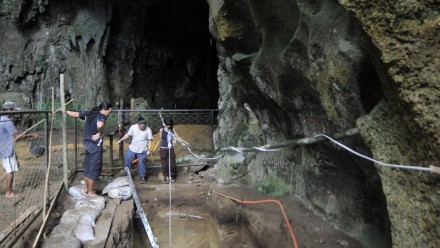New fossil human relative found Homo luzonensis lived more than 50,000 years ago.
A handful of teeth and limestone-encrusted hand, foot and leg bones dug out of a cave in the Philippines have been given their own branch on the human family tree.
The new species – Homo luzonensis – is described this week in the journal Nature, and is believed to have lived more than 50,000 years ago on Luzon, the largest island in the Philippines.
The discovery marks the second time that a species of early human has been found on islands in Southeast Asia that are separated from both the Asian and Australian continental shelves by deep-water straights.
The diminutive Homo floresiensis, discovered in 2004 on the Indonesian island of Flores, was the first.
[Although “the hobbit”, as it became known, is now accepted as a unique species, its seemingly bizarre mix of archaic and modern traits initially was met with great skepticism.]
H. luzonensis is also a mix of old and new, packaged in what was probably a small body.









